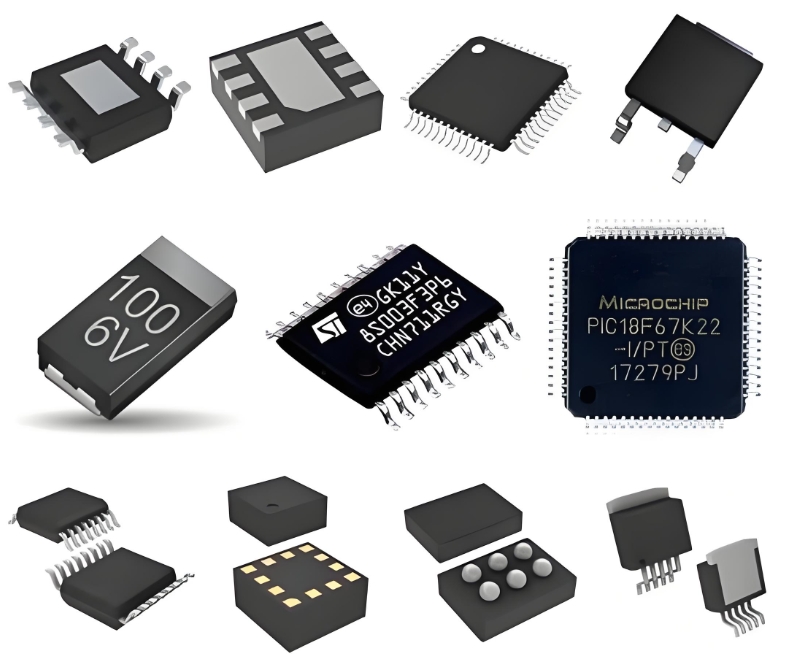**ADM809TART-REEL: A Comprehensive Guide to Microprocessor Reset Circuits**
In the realm of electronic design, ensuring a microprocessor starts and operates correctly is paramount. This critical task falls to a dedicated class of devices known as microprocessor supervisory circuits or reset ICs. Among these, the **ADM809TART-REEL** stands as a quintessential and widely utilized component, providing a robust and reliable solution for managing system power and integrity.
**The Critical Role of the Reset Circuit**
A microprocessor's internal state is volatile during power-up. The voltage rail rises slowly, and the processor may begin executing code from an undefined memory state, leading to catastrophic and unpredictable system behavior. A reset circuit **holds the microprocessor in a known state** until the power supply stabilizes at a valid level, ensuring a clean and controlled startup. It also continuously monitors the supply voltage during operation, initiating an immediate reset if a brownout or power glitch occurs, thus preventing data corruption.
**Key Features and Specifications of the ADM809TART-REEL**
The ADM809TART-REEL is a part of Analog Devices' extensive supervisory IC family. The "REEL" suffix indicates it is supplied on a tape-and-reel carrier for high-volume, automated manufacturing. This specific device is designed to monitor 5V, 3.3V, and 3V power supplies. Its core functionality can be broken down into several key features:
1. **Precision Voltage Monitoring:** The IC features a factory-trimmed reset threshold, typically 4.63V for the 5V variant. This high accuracy ensures the reset signal is asserted and de-asserted at precisely the correct voltage points, **eliminating uncertainty during power transitions**.
2. **Manual Reset Input:** A key feature of the ADM809 is its active-low manual reset (MR) input pin. This allows an external switch or another logic circuit to **force a system reset on demand**, which is invaluable for debugging and user-initiated reboots.

3. **Reset Output:** The ADM809T provides an active-low reset output (/RESET). This signal is asserted (pulled low) when VCC is below the threshold or when the manual reset is activated. It remains asserted for a minimum period (typically 240 ms) after VCC rises above the threshold, providing ample time for the power supply and clock oscillator to stabilize.
4. **Debounced Manual Reset:** The internal circuitry debounces the manual reset input, preventing **erratic reset triggering from mechanical switch bouncing**.
5. **Low Power Consumption:** With minimal quiescent current, the ADM809T adds negligible load to the power supply it is monitoring, making it ideal for power-sensitive applications.
**Application Circuit and Implementation**
Implementing the ADM809TART-REEL is remarkably straightforward, which is a significant factor in its popularity. The typical application circuit requires only the IC itself and a single bypass capacitor on the VCC pin for noise immunity. The /RESET output is connected directly to the reset pin of the microprocessor, microcontroller, or FPGA. The manual reset input can be left floating (it has an internal pull-up resistor) or connected to a simple push-button switch to ground.
**Why the ADM809TART-REEL is a Designer's Choice**
Designers consistently choose this component for its **proven reliability and simplicity**. It removes the design burden and component count associated with constructing a discrete reset circuit using resistors, capacitors, and transistors. Such discrete solutions are often less accurate, sensitive to temperature variations, and cannot easily incorporate a debounced manual reset function. The ADM809TART-REEL integrates all this functionality into a tiny, robust, and predictable SOT-23 package.
**ICGOODFIND**
The ADM809TART-REEL is a fundamental building block for any microprocessor-based system. Its **robust performance, integration of critical features like manual reset and power monitoring, and exceptional ease of use** make it an indispensable component for ensuring system stability and reliability across countless industrial, automotive, communications, and consumer applications.
**Keywords:** Reset Circuit, Voltage Supervisor, Microprocessor Supervisor, Power-on Reset, Brownout Detection
